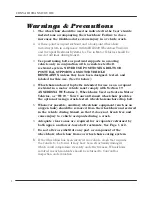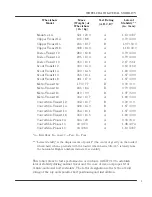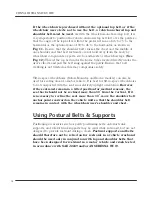
If the wheelchair is purchased without the optional lap belt or if the
wheelchair user elects not to use the belt, a vehicle-anchored lap and
shoulder belt must be used.
As with the wheelchair-anchored lap belt, it is
very important to position the vehicle-anchored lap belt low over the pelvis so
that the angle of the lap belt is within the preferred zone of 45’ to 75’ to the
horizontal or the optional zone of 30’ to 45’ to the horizontal, as shown in
Fig. 11.
Be sure that the shoulder belt crosses the chest and the middle of
one shoulder and that belt restraints are not held away from the body by
wheelchair components or parts, such as armrests or wheelchair legs.
(See
Fig. 12)
Thread the lap belt under the frame tubes located directly under the
user’s elbows and pull the belt snug against the pelvis. Ensure that belt
webbing is not twisted as this may compromise safety.
Tilt-in-space wheelchairs (Safari, Mountee and Rodeo models) can also be
used for seating aboard a motor vehicle. It is best for tilt-in-space wheelchairs
to be transported with the seat in a relatively upright orientation.
However,
if the seat must remain in a tilted position for medical reasons, the
seat back should not be reclined more than 30º from the vertical. If it
is necessary to recline the seat more than 30º, move the shoulder belt
anchor point rearward on the vehicle wall so that the shoulder belt
remains in contact with the wheelchair user’s shoulder and chest.
Using Postural Belts & Supports
Positioning accessories such as pelvic positioning belts, anterior trunk
supports, and lateral trunk supports may be used while in transit, but are not
designed to provide restraint during a crash.
Postural supports and belts
should therefore not be relied on for restraint in a vehicle crash and
should be used only in conjunction with lap and shoulder belts that
have been designed for restraint in a motor vehicle and crash tested
in accordance with SAE J2249 and/or ANSI/RESNA WC19.
14
CONVAID
TRANSIT GUIDE





































